
Better Public Transit Key to the Future of 'The 905'
UrbanToronto.ca
April 23, 2018
Robert Mackenzie
When it comes to public transit in the Greater Toronto and Hamilton area, "Not everything is about Toronto".
With that bold statement last week, Signe Leisk, a partner at Cassels Brock and member of the local Urban Land Institute (ULI) board of management, introduced ULI Toronto's latest discussion event, "905 to 905: The Missing Transit Link".
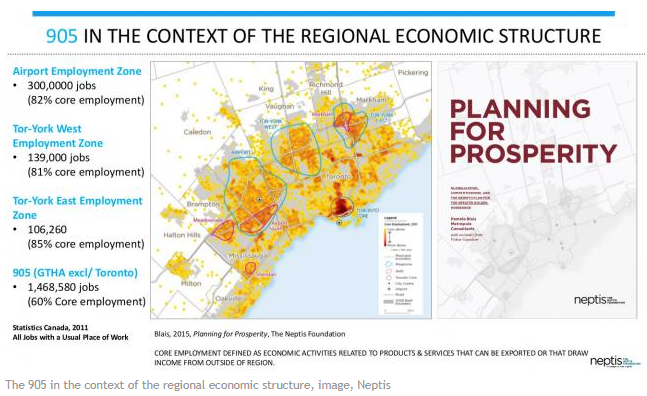
Places to Grow, the Province of Ontario's growth plan for the Greater Golden Horseshoe, has tasked municipalities across the region with urbanizing, intensifying and creating transit-oriented development. Under the plan, efficient regional transit is a critical tool to enable municipalities to achieve these goals. However, according to the ULI, the current regional transportation model primarily provides opportunities for public transit trips between downtown Toronto and surrounding municipalities. For large numbers of residents who need to travel across the so-called '905 municipalities', networked transit solutions are very limited, representing a missing piece in the puzzle required to fulfill the provincial Growth Plan mandate. (ULI—among many other groups—derives the term '905' from the telephone area code that most of this region, except for the City of Toronto, share.)
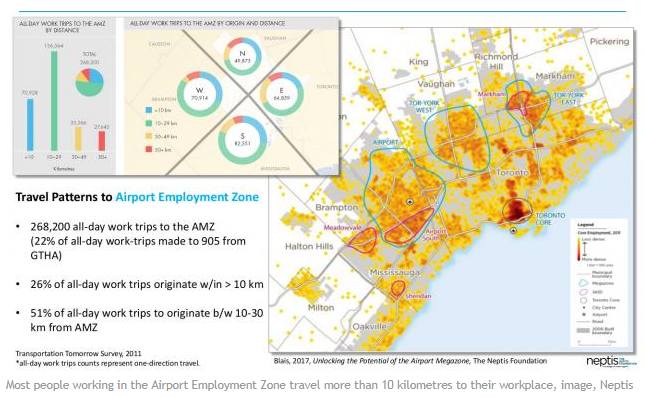
The goal of the discussion was for attendees to learn how the region can better leverage assets like a future regional transit centre at Toronto Pearson International Airport and the Highway 407 corridor to enhance transit connections across municipal borders. In the audience were officials from federal, provincial and municipal governments, transit agencies, development companies, construction companies and many other.
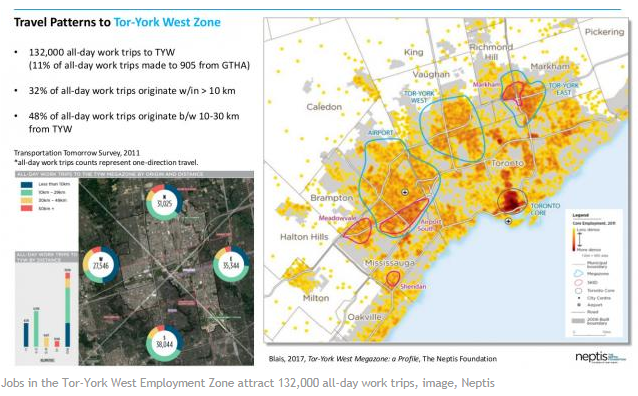
John Duffy, chair of the advisory firm, StrategyCorp, moderated the panel discussion in the Sheraton Gateway Hotel, beside Pearson's Terminal 1. He reminded the audience about the work of Joel Garreau, who, in 1991, wrote Edge City: Life on the New Frontier to profile recently urbanized areas in North America similar to "the 905". Duffy stated that these areas haven't developed quite the way that Garreau predicted. That's because, in many parts of North America, transit is helping to transform these suburban areas into urban centres or "downtowns" on their own.
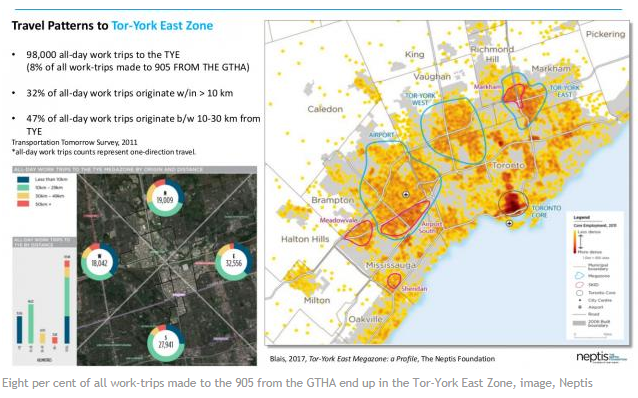
The area around Pearson Airport is becoming one of those downtowns. It's now the second largest employment centre in Canada – behind downtown Toronto and ahead of downtown Montreal and downtown Vancouver in the list. Unlike most downtowns, however, this area has very poor transit connections.
Duffy then introduced the panellists who each brought more context to the issues surrounding transportation options in the 905.
First, Marcy Burchfield, executive director of the Neptis Foundation, an independent, privately capitalized charitable foundation that conducts and disseminates nonpartisan research, analysis and mapping about the design and function of Canadian urban regions, spoke.
She cited a study by her research colleague, Pamela Blais, principal at Metropole Consultants, that identified three major employment centres in the 905 on the edge of Toronto:
- the airport area;
- the "Tor-York West" area near Highways 407 and 400; and
- the "Tor-York East" area near Highways 407 and 404.
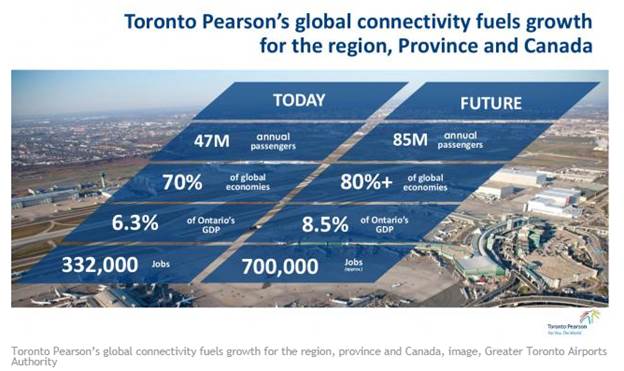
The airport zone offers jobs to 300,000 people. Eighty-two per cent of that employment is from "core jobs" – meaning work related to products and services that companies export outside the zone or that draw income from outside of the region. The Tor-York West area, represents 139,000 jobs—81 per cent core employment. The Tor-York East area accounts for 106,260—85 per cent core. The entire 905 area employs 1,468,560 people—60 per cent of those positions are core.
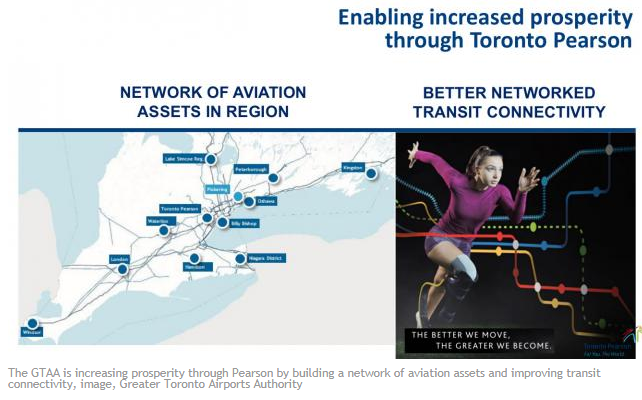
Local and provincial government agencies collect information about urban travel in southern Ontario every five years with the Transportation Tomorrow Survey. This data helps governments plan transportation and decide appropriate infrastructure investments.
According to the 2011 survey, 90 per cent of the people who travel to work in the airport area travel by car. Twenty-two per cent of the people who travel to work in the 905 travel to the airport area. Twenty-six per cent of all-day work trips originate within 10 kilometres of the area, while 51 percent originate from 10 to 30 kilometres away.
The Tor-York West and East employment zones reflect similar travel patterns. The west area receives 132,000 all-day work trips, while the east gets 98,000. Again, the majority of those trips are from areas further than 10 kilometres from workplaces.
So how do people get around these areas to and from work? David Munroe, Engagement Manager at McKinsey and Company, a global management consulting firm, presented the results of a recent study on east-west travel in the 905. The study team divided the Greater Toronto and Hamilton area into three distinct subregions:
- West: Peel, Halton and Hamilton;
- Central: Toronto and York; and
- East: Durham.
Only a small part of residents in each of the three subregions travel to work by transit--just seven per cent in the west and five per cent in the east. On the other hand, 21 per cent of central area residents commute by transit.
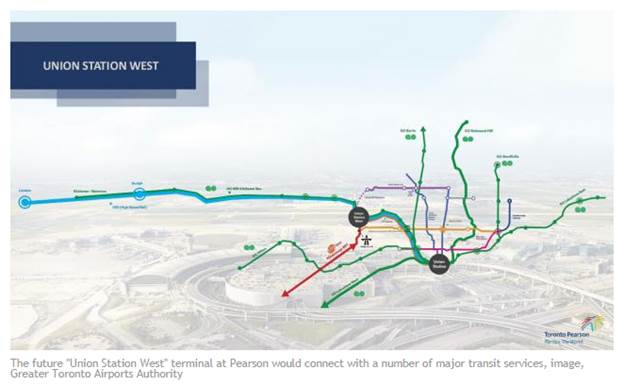
Munroe told the audience that more people travel between the west and the northern part of the central subregion than do from the west to the southern part. About 190,000 people commute daily from Peel, Halton or Hamilton to northern Toronto or York Region, while only 160,000 make a similar trek to downtown Toronto. Just 134,000 journey from the west to midtown Toronto.
Thirty-two percent of workers travelling to and from downtown Toronto use public transit, while just nine percent of commuters ride buses, streetcars and trains to midtown and northern Toronto and York Region.
Munroe said that few commuters from the west to the north-central district travel by transit, because current networks are cumbersome and seldom facilitate east-west trips across the region unless the trip includes downtown Toronto.
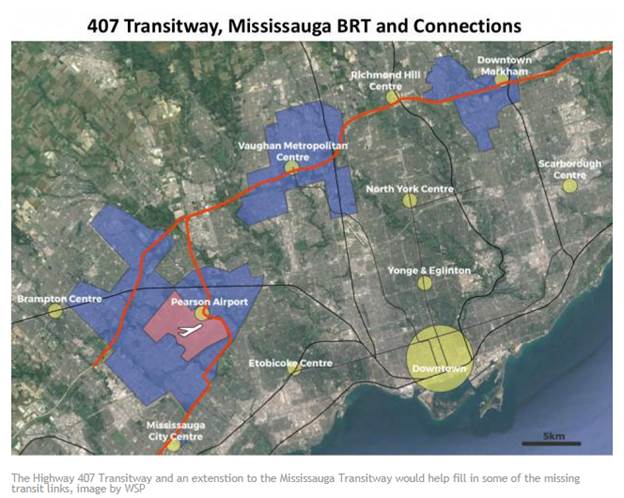
He illustrated this with three examples from his research. Someone travelling from the Square One area of Mississauga to downtown Toronto by public transit would only need to add another 15 minutes to their schedules than if he or she had journeyed by car. If the same person travelled from Square One to the Vaughan Metropolitan Centre, he or she would have to plan for an extra 35 minutes by transit. If the trip extended even further eastward to Richmond Hill, that public-transit commuter would face 50 minutes more than driving each way.
Next, attendees heard from Eileen Waechter, the Greater Toronto Airport Authority's director of corporate relations and strategic partnerships. Waechter focussed on Toronto Pearson's role in the 905. "Pearson offers the region global connectivity that fuels growth for the region, the province and Canada", she said.
Pearson welcomes more than 47 million passengers annually and contributes directly or indirectly to 6.3 per cent of Ontario's gross domestic product. As Duffy had previously noted, Waechter pointed out that the airport employment zone provides 300,000 jobs to Ontarians – 49,000 of them are at Pearson itself. Although Waechter did not offer an exact timelines, she predicted that "in the future", the airport would handle 85 million visitors, while the nearby area would provide 700,000 jobs, and provide 8.5 per cent of the GDP.
She told the group that the airport authority was already planning to increase its connections with the rest of the GTHA and southern Ontario. For example, it's collaborating with other airports to improve air travel to and from the province and to share information on common issues.
The GTTA is also planning for a transit hub at or near Pearson to help furnish those missing transit links. This future terminal, which she dubbed "Union Station West", would likely include links to Union Pearson Express trains, the Crosstown LRT, already under construction, and Finch West LRT, to under construction son, and an extension to the Mississauga Transitway. Waechter said that Metrolinx and the Ontario government are both examining ways to connect the future high-speed rail line and GO Transit's Kitchener train line to this future hub.
The final speaker was Daniel Haufschild, vice-president, urban mobility at globally recognized professional services firm, WSP Canada. Haufschild agreed with the other panelists in that transit was the missing link in the 905, but added that municipalities in the area must also intensify, if transit connections are to be successful. Haufschild told attendees that when his firm worked on plans to extend the Crosstown LRT to Pearson, they discovered that more potential passengers would travel westward toward the airport than would travel eastward toward Toronto's core.
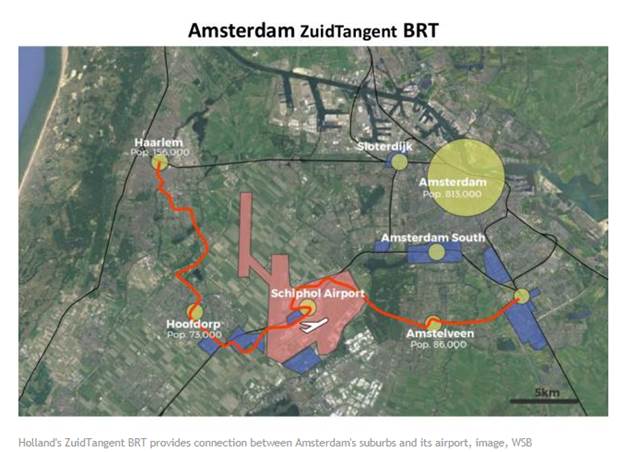
He also highlighted the importance of the future Highway 407 Transitway to mobility in the area, along with a longer Mississauga Transitway through the airport hub to Highway 407. He compared this future bus-rapid transit network with the ZuidTangent BRT in the Amsterdam area, connecting Schiphol International Airport with the Amsterdam suburbs and the nearby city of Haarlem.
Metrolinx is continuing the transit project environmental assessment process for segments of the Highway 407 route, but the transit agency's regional transportation plan does not foresee that project being completed until after 2041. Perhaps some of the messages from this event may require the provincial transit group to rethink the timeline and reprioritize the project.
